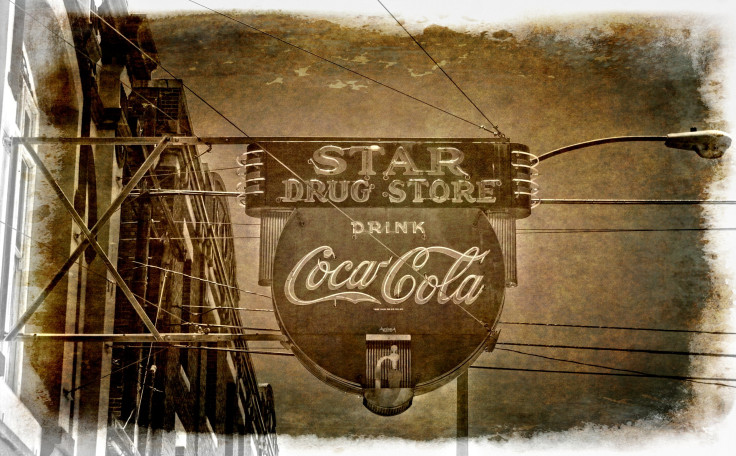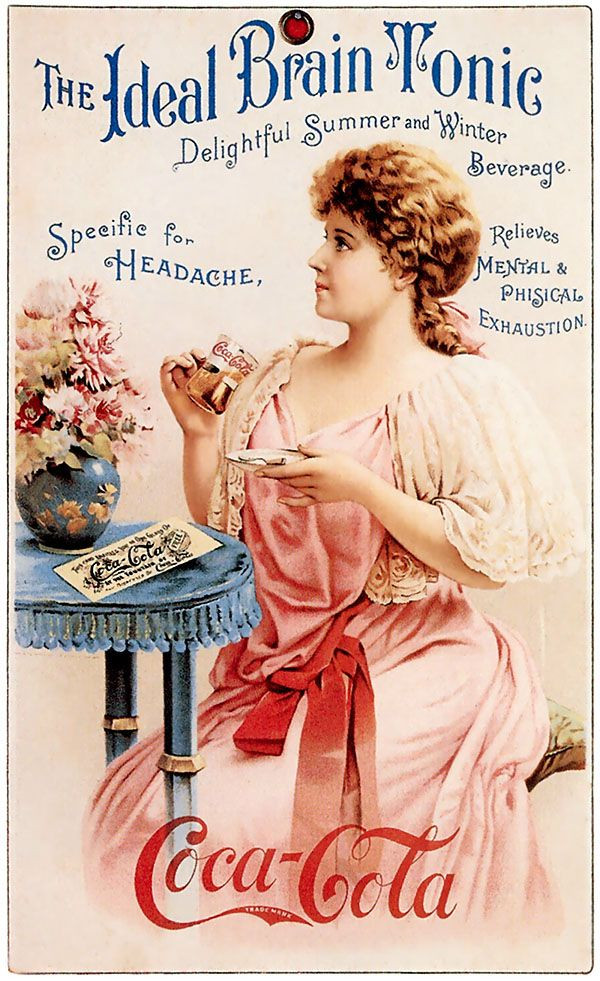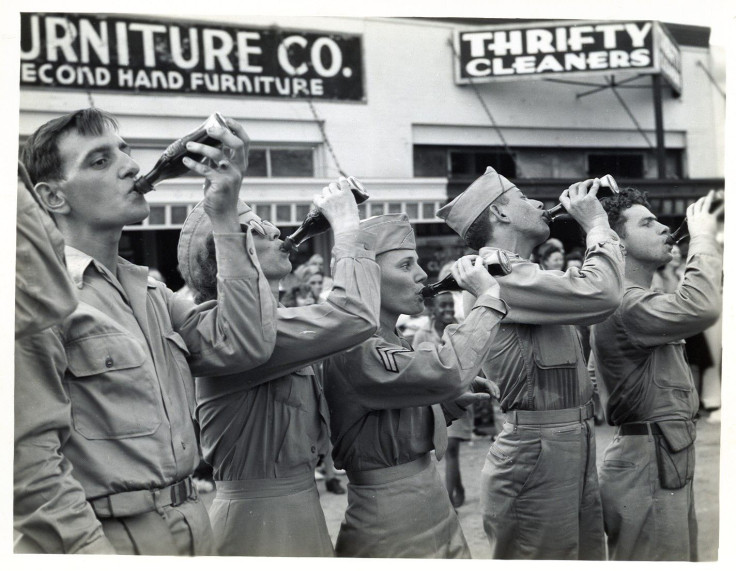Sodastream: 6 Ways Science Helped Soda Take Over America's Beverage Industry

Soda would be nothing today without the concoctions and innovations of hundreds of chemists, pharmacists, and inventors. The drink has gone from a type of medicine to morale booster throughout history, with each turn of the century regarding the beverage differently. Today, carbonated soft drinks are the most commonly consumed beverage in the United States, with Americans downing an average of 43.8 gallons per person each year. It’s a significant drop from the 53 gallons Americans drank in 2000, but it still remains a sweet and stubborn staple in society.
The Harvard T.H. Chan School of Public Health cited the beverage, once dotted as a cure for certain ailments, is now considered a carcinogen. The juxtaposition between being thought of as both a means of treatment and cause of disease may seem puzzling at first, but when you trace soda's history, it becomes a bit more clear.
The Scientific Success of Soda
1. Inventing Carbonation
Soda was born out of Europe's natural mineral waters, which was initially prescribed as a healing treatment for hundreds of years. Bathing in spas or drinking the water was, at the time, believed to cure a wide variety of illnesses. But it wasn’t until 1767 someone would figure out how to infuse carbon dioxide into water; that someone was British chemist Joseph Priestley. Credited also as the man to identify oxygen, Priestley created the bubbly process and ultimately invented a fizzy mineral beverage, at least for the time being.
By 1783, Swiss scientist Johann Jacob Schweppe figured out how to improve the fizz by inventing a new and improved hand-cranked compression pump. The only thing was the drink had to be consumed immediately after the mineral water was infused with carbon dioxide, or else the fizz would go flat. In 1832, American inventor John Matthews aimed to solve this problem by taking the carbon dioxide-infused mineral water and mixing it with calcium carbonate. After stabilizing the gas and adding in some cool water, he was able to create carbonated water, which made the fizz last all day.
Then, in 1839, Charles Plinth stepped in and invented a siphon system, which eventually became the first soda dispensers; soda fountains dispensed bubbly mineral water without losing the fizz. Its popularity quickly spread across Europe and reached the United States in no time.

2. Social Soda Fountains
Fast forward to 1899—the first patent was issued for a glass-blowing machine that created an automated glass bottling production. This gave consumers an opportunity to purchase beverages and bring them home. The to-go aspect changed the way beverages were consumed in America, increasing the market from 1,500 to 57,000 bottles a day within a few years of bottling.
Benjamin Silliman, a chemistry professor at Yale College, has been credited as the man who successfully launched the carbonated drink industry in America. However, his business of selling the drink as more of a medicine than a way to socialize led to his eventual failure. The social aspect became a large part of the soda industry, because it brought together groups of intellects seeking the health benefits of the drink.
Unfortunately, Silliman didn’t understand that soda's success wasn't driven by the medicinal effects, but instead by the theory of group behavior, which argues humans act and flourish in groups. But before business plummeted, he did do something revolutionary: He brought the soda dispenser to the U.S. and built a larger apparatus for the carbonated drinks. He and his partners opened up fountains in New York City and Baltimore, further popularizing the drink.
3. Delicious Medicine
At this point carbonated mineral drinks were still viewed as a healthy, medicinal beverage. The first soda shops were set up inside of drugstores and pharmacies, which is why chemists started adding ingredients, like quinine and iron, to increase the medical value of the drink. However, the additives gave it a bitter taste, prompting them to mix in natural ginger and the bark of a sassafras tree, laying the foundational flavor for Ginger Ale and Root Beer.
In 1886, Dr. John Pemberton, the inventor of Coca-Cola, began making soda in his backyard by boiling syrup with mystery ingredients. After achieving an enjoyable taste, he brought the concoction over to a local pharmacy and mixed it with carbonated mineral water. At the time, bubbling spring mineral waters were thought to treat everything from gallstones to scurvy, giving the tasty drink a delicious and misconstrued health benefit.

4. Better Than Booze
Pharmacists got a little out of control with masking flavors, eventually adding tonics already mixed with alcohol; some soft drinks contained as much as a shot of whiskey. Even then it was still considered a medicinal drink, which allowed it to evade taxes applied to alcoholic beverages. Because soda costs a fraction of the price of an alcoholic beverage, it only increased customers' desires to visit soda fountains.
Next, pharmacists began stirring in 0.1 grams of cocaine. When the drug was first isolated in 1855, it was also considered medicinal and of no threat to the body. Dosages were small enough to keep customers' high under control, with its addictive aspect spiking soda sales. With a clearly successful product, pharmacists were quickly being replaced with bartenders, who began experimenting with new flavors, like chocolate and citrus fruits such as lemon and lime.
Eventually, U.S. government officials realized what cocaine was capable of and signed the Pure Food and Drug Act of 1906, requiring all narcotics to be clearly labeled. Soda companies using the drug stimulate, like Coca-Cola, needed something to replace consumers' high and improve its recipe. This prompted them to turn to more sugary recipes.
5. Drinkable Morale for Soldiers
Soda was well established in America, but at the outbreak of World War II, sugar and coolers were rationed, increasing costs and threatening the industry. The military recognized how difficult it was for young soldiers overseas, and while the only thing they had to keep social comradery was alcohol, they needed sobriety. In 1941, Coca-Cola President Robert Woodruff announced they would "see that every man in uniform gets a bottle of Coca-Cola for 5 cents, wherever he is and whatever it costs the Company."
According to a 2015 study, humans need to feel part of a group or included in order to achieve military objectives; soda fulfilled this role for soldiers during the war. Having soldiers train together, wear the same clothes, and enjoy the same drink reinforces the group's needs above the individual. Researchers at the National WWII Museum wrote Gen. Dwight Eisenhower recognized the need to manage morale on the battlefield, and made sure soda was available to soldiers overseas. Soon, soda was a symbol of freedom, unifying soldiers and Americans at home alike. By the end of the war, more than 5 billion bottles of Coke were consumed by military service personnel.
After the war, the international exposure fueled worldwide shipping and unprecedented mass production shortly thereafter. Coca-Cola was the first globally recognized brand and is now the most recognized trademark in history. To date, it's sold in over 200 countries around the world.

6. Diet Soda for Diabetics
The diet version of the fizzy stuff can be sourced back to Brooklyn, N.Y. In 1952, a sugar-free ginger ale called "No-Cal' was created for diabetics looking to cut back on their sugar intake. At the time, soda giant Coca-Cola accounted for 60 percent of soft drink sales in America, but sales were stagnating and it needed a new marketing angle. In 1963, it stepped into the diet market and invented its own version. Sales grew three times as fast across the country, with sales exacerbated by the fact society revered thinner waistlines.
Today, one-fifth of U.S. adults consume diet drinks every day, according to the Centers for Disease Control and Prevention. While sugary soda drinks are a major source of sugars and unnecessary added calories, diet drinks have been associated with many negative health risks. Studies have shown drinking diet soda is linked to bigger waistlines, especially if drinkers are over the age of 65. The danger is compounded for older people, who are already at an increased risk for heart and metabolic diseases because of their age.
Calorie-free sodas are arguably more attractive to those who are looking to lose weight. But according to another recent study, the artificial flavoring in diet soda has been shown to interfere with gut bacteria.
Published by Medicaldaily.com



























